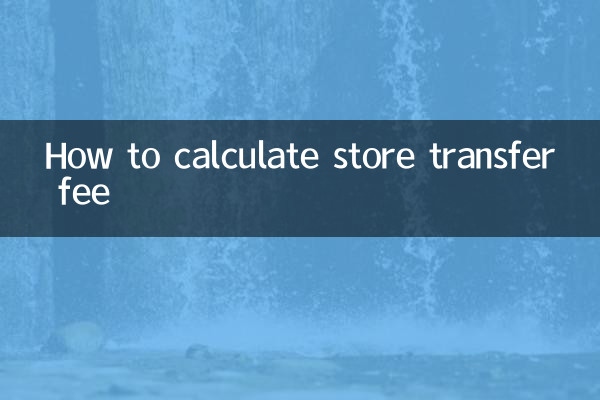How to calculate store transfer fee
In recent years, with the frequent commercial activities and the increasing demand for store transfers, the calculation of store transfer fees has become the focus of many merchants. This article will combine the hot topics and hot content on the Internet in the past 10 days to provide you with a detailed analysis of the calculation method of store transfer fees and provide structured data for reference.
1. Main components of store transfer fees

Store transfer fees usually include the following parts:
| Fee type | Description | reference standard |
|---|---|---|
| Industrial and commercial registration fee | Fees for changing business license | 50-300 yuan (regional differences) |
| real estate transfer tax | If the store involves real estate transfer, it will need to pay deed tax, value-added tax, etc. | Deed tax 1%-3%, value-added tax 5.6% |
| Intermediary service fee | If handled through an intermediary, a service fee will be charged | 1%-2% of transaction amount |
| Other miscellaneous expenses | Including appraisal fees, notary fees, etc. | 500-2000 yuan |
2. Differences in transfer fees in different regions
Due to different policies and economic levels in various places, the calculation standards for store transfer fees also vary. The following is reference data for some cities:
| city | Industrial and commercial registration fee | Real estate transfer tax (reference) |
|---|---|---|
| Beijing | 200 yuan | Deed tax 1.5%, value-added tax 5.6% |
| Shanghai | 150 yuan | Deed tax 1%, value-added tax 5.6% |
| Guangzhou | 100 yuan | Deed tax 1%, value-added tax 5.6% |
| Chengdu | 80 yuan | Deed tax 1.5%, value-added tax 5.6% |
3. How to reduce store transfer costs?
1.Handle some procedures on your own: Simple processes such as industrial and commercial registration can be handled by yourself to save intermediary fees.
2.Properly plan taxes and fees: Consult tax experts to learn about preferential policies and reduce unnecessary tax expenses.
3.Choose transfer in off-season: Some areas may have lower fees at the end of the year or during policy adjustment periods.
4. Recent hot topics: The impact of policy adjustments on transfer fees
In the past 10 days, many places have introduced new policies to optimize the commercial transfer process. For example, one province announced that it would reduce the industrial and commercial registration fee for small and micro enterprises to 50 yuan and simplify the real estate transfer procedures. Such policies may save merchants 10%-20% of transfer costs. It is recommended to pay close attention to local developments.
5. Summary
The calculation of store transfer fees involves many elements and needs to be flexibly adjusted according to the region, property type and policies. Through reasonable planning and utilization of preferential policies, transfer costs can be effectively reduced. I hope the data and suggestions provided in this article can help you with your store transfer!

check the details

check the details